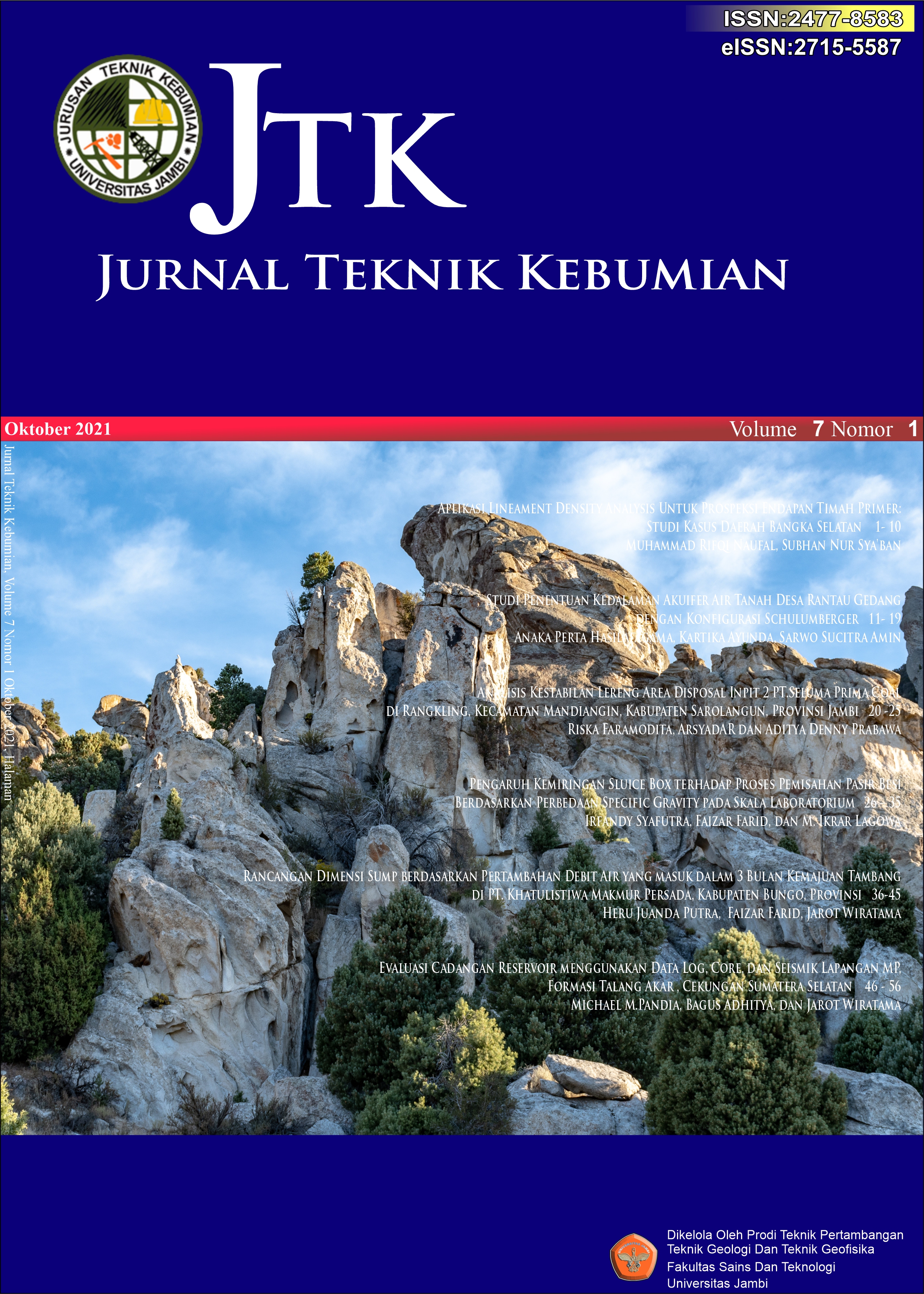Aplikasi Lineament Density Analysis Untuk Prospeksi Endapan Timah Primer: Studi Kasus Daerah Bangka Selatan
DOI:
https://doi.org/10.22437/jtk.v7i01.23062Abstract
Primary tin deposits on the island of Bangka have high potential. However, currently the main source of tin rests on the production of secondary tin deposits (placer tin deposits), so an initial assessment is needed to help streamline the exploration process. Through this study, the authors tried to map the prospect area of primary tin deposits in South Bangka using a method of straightness density analysis. This method was chosen because the presence of the prospect of primary tin deposits cannot be separated from the control of geological structures, in addition this method can be used as an initial overview as well as save time and cost in exploration activities. The
data used for analysis is the Digital Elevation Model (DEM). DEM data is processed into hillshade using 3D Analyst tools on ArcMap to visualize 2-dimensional to 3-dimensional fields in 4 variations with azimuth angles of 0o,45o,90o,and 135o. Hillshade data is overlayed,then lineament extraction is performed using PCI Geomatica software. The extraction proceeds are exported into shapefile to be processed using ArcMap software and processed to get the straightness density zone at the research site. Straightness density data at the research site compared to straightness patterns in areas that have been carried out primary tin deposit mining activities so that areas are estimated to have good prospects of primary tin deposits. The results showed that the straightness in South Bangka has a tendency to move Northeast-Southwest except the Toboali area which tends to have a northwest-southeast directional straightness orientation. Thereare several locations with density and straightness orientation similar to locations that have been done mining so it is recommended to conduct more detailed exploration.
Keyword: tin, lineament, geological structure, mineralization, South Bangka
Downloads

Downloads
Published
How to Cite
Issue
Section
License

This work is licensed under a Creative Commons Attribution-NonCommercial-ShareAlike 4.0 International License.





